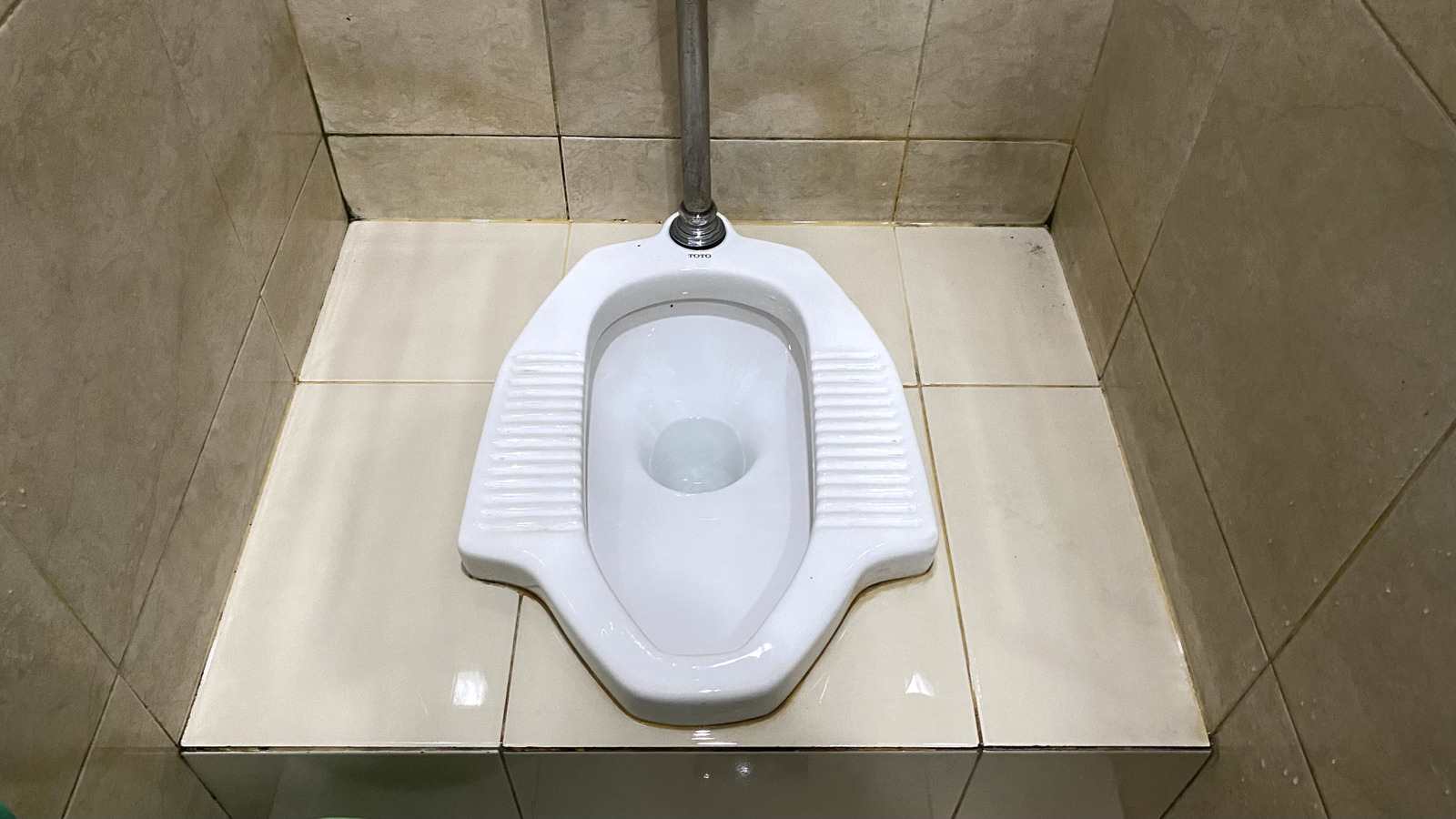The squat toilet, widely used across various countries, offers an alternative to the conventional sitting toilet commonly found in Western countries. This type of toilet is common in regions of Asia, Africa, and the Middle East. Though it may seem unfamiliar to some, many people prefer the Squat Toilet due to its potential health benefits and hygiene advantages. In this article, we will explore what a squat toilet is, how it works, its health benefits, and its cultural significance.
What is a Squat Toilet?
A squat toilet is a floor-level toilet that requires the user to squat rather than sit. It typically consists of a bowl or pan embedded in the ground, with footrests on either side to provide stability. Unlike Western-style toilets, there is no elevated seat, which allows for a more natural squatting posture when using the toilet. The design is simple and requires less water than standard toilets, making it a popular choice in many parts of the world where water conservation is important.
Squat toilets are common in public spaces and homes across various regions, particularly in Asia. Many people in these regions grow up using squat toilets, finding them more hygienic and suited to their daily needs.
How to Use a Squat Toilet Correctly
For those who are unfamiliar with a squat toilet, the first experience can be somewhat daunting. However, learning the proper technique can make it easier to use. Here are some steps to follow:
- Positioning: Stand with your feet on either side of the Squat Toilet. Your stance should be balanced, and your feet should be flat on the footrests or on the ground beside the toilet bowl.
- Squat: Lower yourself into a squat position, keeping your back slightly bent and your weight centered over your feet. The key is to keep your balance while maintaining a comfortable squat.
- Clothing: Pull down your clothing far enough to prevent soiling, ensuring your pants or skirt are clear of the toilet.
- Stability: Some squat toilets feature textured footrests or raised edges to help you maintain stability while squatting. Hold onto walls or support bars if available.
- Cleanliness: After using the squat toilet, many cultures use water for cleaning rather than toilet paper. You may find a small jug or a bidet spray available for this purpose. If you prefer, you can also carry your own toilet paper.
While the squatting position may take some getting used to, most people adapt quickly and find it comfortable over time.
Health Benefits of Using a Squat Toilet
One of the primary reasons why people advocate for the squat toilet is its potential health benefits. Squatting is a more natural position for bowel movements and can help alleviate several digestive issues. Some of the health benefits include:
1. Easier Bowel Movements
Squatting helps relax the puborectalis muscle, which surrounds the rectum. When sitting, this muscle remains partially constricted, which can make bowel movements more difficult. In a squatting position, the muscle fully relaxes, allowing for easier and more complete evacuation of the bowels.
2. Prevention of Constipation
By facilitating smoother bowel movements, the squatting position reduces the need for straining, which is a common cause of constipation. Many people find that using a Squat Toilet regularly helps regulate their digestive system.
3. Reduced Risk of Hemorrhoids
Excessive straining during bowel movements is a leading cause of hemorrhoids. Squatting requires less effort, which in turn reduces the risk of developing hemorrhoids. The position allows for a more natural and efficient passage of stool, which minimizes the strain on the rectal muscles.
4. Improved Pelvic Floor Health
Squatting strengthens the pelvic floor muscles, which can help prevent conditions such as pelvic organ prolapse and urinary incontinence. This position engages the muscles, improving their function over time.
Cultural Significance of the Squat Toilet
The squat toilet holds significant cultural importance in many parts of the world. In countries like India, China, and Japan, squat toilets have been used for centuries and remain common in public restrooms and homes. They are often seen as more hygienic, as there is no direct contact with the toilet itself. This reduces the risk of transmitting germs and bacteria, which is especially important in public restrooms.
Additionally, the use of water for cleaning rather than relying solely on toilet paper is a cultural practice in many countries. Water is considered more thorough and hygienic for cleansing after using the toilet, and it helps reduce waste by minimizing the need for toilet paper.
Environmental Impact
The Squat Toilet is often more environmentally friendly than the Western-style sitting toilet. Traditional toilets use a significant amount of water with each flush—typically around 1.6 gallons (6 liters) per flush. In contrast, many squat toilets use much less water, especially those with manual flushing systems, making them ideal for regions where water conservation is a priority.
Additionally, squat toilets are easier to maintain in terms of cleaning and sanitation, as their design prevents direct contact with the surface, making them more sanitary in public spaces.
Challenges of Using a Squat Toilet
While the squat toilet has many advantages, it is not without its challenges, particularly for those who are unaccustomed to it.
1. Physical Discomfort
For individuals with limited mobility or joint problems, squatting for an extended period can be uncomfortable or even painful. People who are not used to squatting regularly may find it difficult to maintain the position, especially if they have knee or hip issues.
2. Hygiene Concerns
Though squat toilets are considered more hygienic due to the lack of contact with a seat, some users are concerned about hygiene in public restrooms. The floor around the toilet can become wet or dirty, making it difficult to maintain cleanliness while squatting.
3. Accessibility Issues
For elderly individuals or those with mobility challenges, using a squat toilet can be difficult. The act of squatting requires flexibility and strength, which may not be possible for everyone. This can lead to discomfort or make it harder for some individuals to maintain balance, increasing the risk of falls. Accessibility solutions, such as installing support bars, are often necessary to help those with physical limitations use squat toilets more safely.
Conclusion
The Squat Toilet offers a range of benefits, from promoting better digestive health to being more environmentally friendly. Though it may take some getting used to, the health advantages of squatting during bowel movements are well documented. Whether you’re traveling to a country where squat toilets are common or simply looking to explore the potential benefits for yourself, understanding how to use and appreciate this type of toilet can enhance your overall health and bathroom experience. By maintaining proper technique and embracing the cultural and hygienic benefits, you can make the most of using a squat toilet.



